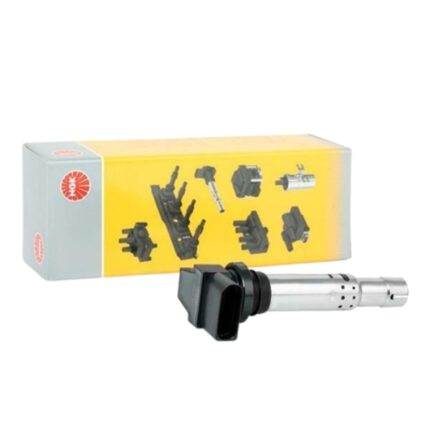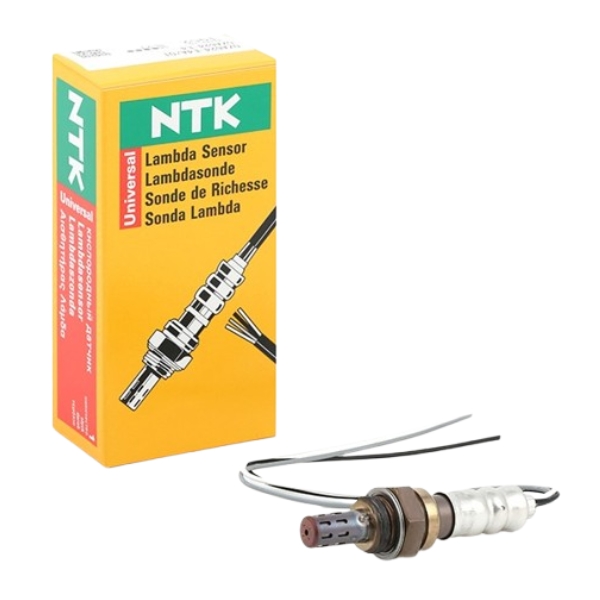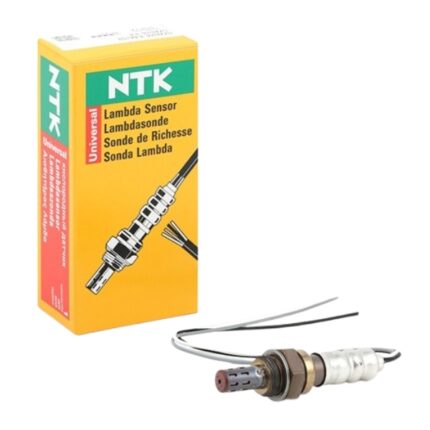Get NTK 1952 Universal Oxygen Sensor OZA624-E4A in Kenya
The Universal Oxygen Sensor, commonly referenced by the NTK 1952 specification, is a critical engine management component that plays an essential role in monitoring and optimizing the air-fuel mixture in an internal combustion engine. It is part of the exhaust system and provides feedback to the vehicle’s electronic control unit (ECU), helping regulate fuel delivery and reduce harmful emissions.
This sensor’s importance cannot be overstated. Without precise oxygen readings from the exhaust stream, the engine’s fuel management system cannot maintain an ideal air-fuel ratio. A universal design such as this provides broad applicability and flexibility across a wide range of engine types and configurations.
Function and Role in the Engine System
The primary function of an oxygen sensor is to detect the proportion of oxygen in the vehicle’s exhaust gases. This data is used by the engine control module (ECM) to maintain a stoichiometric air-fuel mixture—typically a ratio of 14.7 parts air to 1 part fuel by weight—for optimal combustion.
This balance is crucial for:
-
Maximizing fuel efficiency
-
Reducing exhaust emissions
-
Enhancing engine performance
-
Preventing engine knocking or misfires
-
Ensuring catalytic converter protection
The universal oxygen sensor monitors the oxygen content in the exhaust stream before or after the catalytic converter. Upstream (pre-cat) sensors help the ECU adjust the fuel injection in real time, while downstream (post-cat) sensors ensure that the catalytic converter is functioning properly.
Design Features
The NTK 1952 equivalent universal oxygen sensor features a robust and durable design engineered to withstand the extreme operating conditions of the exhaust environment. It typically includes the following components:
-
Sensing Element:
Made of zirconium dioxide (zirconia) ceramic, the core component operates by generating a voltage based on the difference in oxygen levels between the exhaust gas and ambient air. The zirconia element is coated with a porous platinum electrode and protected by a ceramic heater. -
Heater Circuit:
Equipped with an integrated heating element to bring the sensor to operating temperature quickly, ensuring accurate readings regardless of engine temperature. This contributes to lower emissions during cold starts. -
Protective Sheathing:
The sensing tip is encased in a durable stainless steel shell with slots or holes to allow exhaust gases to flow across the sensor, while protecting it from contaminants and thermal shock. -
Universal Wiring System:
The sensor comes with bare leads and may include crimp connectors or heat-shrink butt connectors, enabling compatibility with a variety of original harness configurations. Typically, these sensors are four-wire designs, incorporating signal, ground, and heater power connections. -
Connector Kit:
Often includes a universal connector system for splicing with the vehicle’s original wiring harness. This setup ensures a solid and durable electrical connection. -
Protective Sleeving:
High-temperature, abrasion-resistant insulation shields the wires from environmental and mechanical damage.
Operating Principle
This sensor functions on the narrowband zirconia technology principle. When heated to its operating temperature (approximately 600°C), the zirconia element becomes an electrolyte that conducts oxygen ions. The difference in oxygen concentration across the element generates a voltage signal ranging from 0.1V (lean) to 0.9V (rich).
The ECU reads this voltage to determine whether to enrich or lean out the air-fuel mixture. The sensor’s responsiveness to changes in exhaust composition is crucial for fast, real-time feedback.
Key Benefits
The NTK 1952-equivalent universal oxygen sensor offers several performance and reliability advantages:
-
Broad Compatibility: Can be used across multiple engine types and models due to its universal wire-in design.
-
Accurate Fuel Control: Helps maintain optimal fuel economy and performance by supplying real-time exhaust feedback.
-
Emission Control: Supports catalytic converter efficiency and ensures compliance with environmental standards.
-
Quick Response Time: Integrated heater ensures rapid warm-up for faster closed-loop operation.
-
Durable Construction: Built to resist heat, vibration, contamination, and corrosion.
-
Extended Service Life: Designed to deliver consistent operation over tens of thousands of kilometers or more under normal driving conditions.
Installation and Wiring
As a universal-type sensor, this model requires manual wiring to the vehicle’s existing sensor connector. Installation typically involves:
-
Identifying and matching wire functions (e.g., signal, heater ground, heater power, sensor ground)
-
Crimping or soldering connections with heat-shrink tubing for insulation
-
Routing and securing wires to avoid contact with hot exhaust components
-
Threading the sensor into the exhaust manifold or pipe using anti-seize compound on the threads
-
Clearing engine codes (if applicable) and running diagnostic checks
While installation is straightforward, proper wire matching and secure electrical connection are critical for accurate sensor function.
Common Wire Colors and Functions
While wire colors may vary slightly, a common four-wire configuration includes:
-
Black or Blue (Signal Output) – Sends voltage signal to ECU
-
Gray or White (Sensor Ground) – Provides ground reference for sensor
-
Two White Wires (Heater Circuit) – One for power, one for ground
Universal sensors may have different color codes, so following the included wiring diagram or manufacturer instructions is essential.
Signs of a Faulty Oxygen Sensor
Oxygen sensors wear out over time due to high temperatures, contamination (such as oil, coolant, or silicone), or aging. A failing sensor can cause:
-
Decreased fuel economy
-
Increased exhaust emissions
-
Engine performance issues (e.g., hesitation, rough idle)
-
Illuminated Check Engine Light
-
Failed emissions tests
-
Catalytic converter damage if prolonged
Regular inspection or sensor replacement is recommended around 80,000 to 100,000 kilometers depending on driving conditions and sensor type.
Maintenance Tips
-
Avoid contamination during installation (do not touch the tip with oily hands or gloves)
-
Use anti-seize compound on the threads (only if not pre-coated)
-
Confirm secure, weatherproof wire connections
-
Keep wiring away from high-heat components
-
Reset the ECU or clear codes after replacement if required
Ideal Use Cases
The universal oxygen sensor is suited for:
-
Routine replacement of aged or malfunctioning OEM sensors
-
Emission system repairs
-
Custom or modified exhaust setups
-
Performance tuning or diagnostic troubleshooting
-
Repairs on older or high-mileage vehicles
It is also a cost-effective solution for situations where an exact OEM plug-in match is unavailable or when working on unique engine builds.
Follow us on Facebook for more parts.





Reviews
Clear filtersThere are no reviews yet.